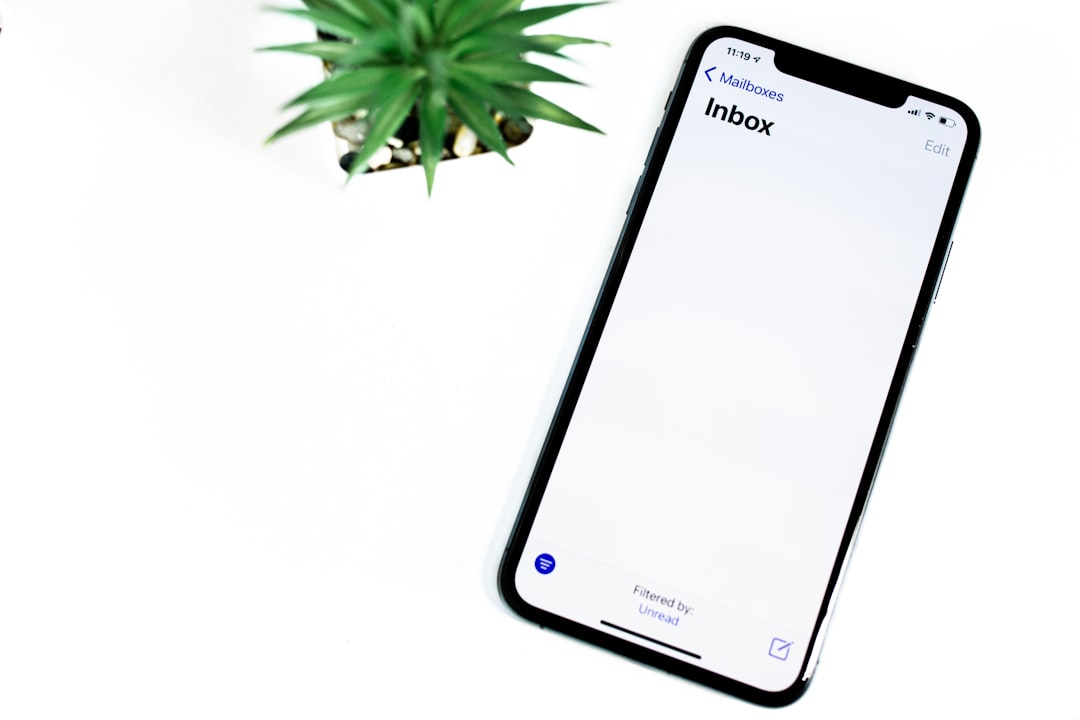Table of Contents
- Introduction
- Understanding your audience and setting goals
- Incorporating responsive design for diverse devices
- Utilizing eye-catching visuals and typography
- Crafting compelling subject lines and preview texts
- Implementing clear call-to-action buttons
- Leveraging personalization and dynamic content
- Testing and analyzing email performance
- Ensuring accessibility and compliancy standards
- Conclusion
- Frequently Asked Questions
Introduction
Ever felt like your emails are blending into the backdrop of an overcrowded inbox? It’s time to stand out! In the bustling world of digital communication, creating engaging and visually stunning emails can be a game-changer. Imagine having the secret toolkit to transform your emails from mundane to mesmerizing!
Delve into the art and science of email design with our spectacular arsenal of template tactics. In this article, we’ll unlock some of the best-kept secrets in crafting emails that not only captivate but also drive action. Whether you’re looking to increase open rates, enhance click-throughs, or simply amaze your subscribers, you’ll find strategies tailored just for you.
| Tactic | Benefit |
|---|---|
| Personalization | Boosts engagement |
| Interactive Elements | Increases click rates |
| Visual Storytelling | Captures interest |
As you navigate through these insights, picture your email transformation happening seamlessly. Are you ready to elevate your email game? Let’s dive into these stunning strategies!
Understanding your audience and setting goals
Creating engaging and visually appealing email templates begins with understanding your audience and setting clear goals. Knowing who your audience is and what they need allows you to tailor your content effectively. Are you targeting millennials who prefer concise, graphics-heavy emails, or are you reaching out to business professionals who appreciate detailed information? Identifying the demographics, interests, and behaviors of your audience can guide your content and design choices, ensuring that your emails resonate with them.
Setting clear goals is equally important for crafting impactful email templates. Define the purpose of each email: Is it to inform, engage, or convert? Goals help in shaping the message, tone, and design elements of the email. For instance, if your goal is to increase conversions, your email should include compelling calls-to-action and visually appealing elements that direct the reader’s attention to key areas. If engagement is the objective, incorporating interactive elements or personalized content could be effective.
By combining a deep understanding of your audience with well-defined goals, you can create email templates that not only capture attention but also drive the desired action from your recipients.
Incorporating responsive design for diverse devices
Incorporating responsive design into email templates is crucial for ensuring that your communication is accessible and visually appealing across a range of devices. With the proliferation of smartphones and tablets, it’s essential to create emails that adapt seamlessly to different screen sizes. This can be achieved through the use of flexible grids and layouts, which allow the content to dynamically adjust according to the screen width.
One effective tactic is utilizing media queries, a CSS technique that applies styles based on the specific conditions of the device displaying the email. In practice, this means defining different font sizes, image scaling, and layout changes to enhance readability and user experience on smaller screens. Additionally, ensuring that buttons and interactive elements are touch-friendly is vital, as they need to be easily tappable on mobile devices.
Testing your emails on various devices and platforms is another important step in the design process, as it helps identify potential issues with formatting or functionality. By incorporating responsive design principles, you can significantly improve engagement rates and ensure your message is effectively communicated, regardless of the device used by your audience.
Utilizing eye-catching visuals and typography
Creating engaging and visually appealing email templates relies heavily on the effective use of eye-catching visuals and typography. When designing emails, using high-quality images that are relevant to your message can help capture attention and improve engagement. Incorporating company branding through logo placement and color schemes ensures brand consistency and recognition.
Typography also plays a crucial role in making emails more readable and engaging. Selecting the right fonts can enhance the overall aesthetic of the email while ensuring readability. It’s essential to maintain a balance between using decorative fonts for headers and simpler fonts for the body text. Additionally, utilizing different font sizes and weights can help emphasize key points and guide the reader’s attention.
Furthermore, incorporating white space strategically within the design prevents the email from feeling cluttered, making it easier for readers to digest the content. Including clear and concise calls-to-action (CTAs) with contrasting colors can drive user interaction by directing recipients towards desired actions.
Overall, combining compelling visuals with thoughtful typography not only attracts recipients’ attention but also ensures the message is conveyed effectively. This approach results in an email template that is both engaging and visually pleasing, increasing the likelihood of achieving desired outcomes.
Crafting compelling subject lines and preview texts
Crafting compelling subject lines and preview texts in email templates is a crucial tactic for increasing open rates and engaging your audience. Subject lines act as the first impression of your email, and their effectiveness can determine whether or not the recipient decides to open and read your message. To create a compelling subject line, it should be concise, relevant, and arouse curiosity. Personalization, such as including the recipient’s name, can also significantly increase engagement.
Preview texts are equally important as they provide an additional chance to capture the reader’s attention. They should supplement the subject line and offer more insight into the content of the email. An effective preview text should maintain coherency with the subject line while being engaging enough to build interest. Avoid repetitive words, and use this space to highlight an intriguing aspect or a key benefit of opening the email.
Overall, these strategies can lead to higher open rates and more meaningful interactions with your audience, as they are designed to entice and retain the attention of potential readers from the moment your email lands in their inbox.
Implementing clear call-to-action buttons
In the realm of email marketing, implementing clear call-to-action (CTA) buttons is essential for boosting engagement and guiding recipients toward desired actions. A well-designed CTA button serves as a beacon that directs users’ attention and encourages them to take immediate action, such as making a purchase, signing up for a webinar, or downloading a resource. To create effective CTAs, it’s crucial to ensure that they stand out visually in your email template. This can be achieved by using contrasting colors that distinguish the button from the rest of your email content, making it more noticeable. The text on the button should be concise, yet descriptive, clearly conveying what the reader will gain by clicking.
Furthermore, the placement of CTA buttons within your email is equally crucial. Positioning them strategically—whether it’s at the end of a paragraph, between sections, or at both the beginning and end of the email—can increase the chances of them being noticed and clicked. Additionally, optimizing CTA buttons for mobile devices is vital, as a significant portion of email recipients access content via their phones. Ensuring that buttons are large enough to tap easily on a touchscreen can improve the user experience and enhance interactivity. By focusing on these elements, marketers can significantly increase the effectiveness of their email campaigns.
Leveraging personalization and dynamic content
Leveraging personalization and dynamic content in email templates can significantly enhance engagement and capture the interest of your audience. Personalization involves tailoring the email content to individual recipients, using data such as their name, preferences, purchase history, or demographic information. This creates a sense of exclusivity and relevance, increasing the likelihood of interaction with the email. Dynamic content takes this a step further by allowing different sections of the email to change based on real-time data and user behavior. This could mean showcasing products that recipients have shown interest in or updating offers based on their location or past interactions.
These tactics not only make emails more engaging but also help build a stronger connection between the brand and its audience. Customizing subject lines, greetings, and call-to-action buttons can enhance open rates and click-throughs. Moreover, segmentation plays an essential role in efficient personalization by grouping subscribers based on specific criteria, ensuring that the content is relevant and targeted. Combining these strategies with eye-catching designs and clear, concise messaging helps create an email template that not only captures attention but also drives desired outcomes for your email marketing campaigns.
Testing and analyzing email performance
Testing and analyzing email performance is a crucial tactic in creating engaging and visually appealing email templates. To begin with, A/B testing, or split testing, is a commonly used method. It involves sending two versions of an email to two groups within your audience to determine which performs better. This can include changes in subject lines, calls-to-action, or even design elements.
Another important aspect is tracking key metrics such as open rates, click-through rates, and conversion rates. These metrics provide valuable insights into how well your emails are performing and highlight areas for improvement.
Leveraging analytics tools can also help refine your approach by offering data-driven insights. Utilizing tools like Google Analytics or email platform-specific analytics can show you patterns in subscriber behavior.
Regular analysis of this data can enable you to fine-tune your content, ensuring it resonates with your audience effectively. Additionally, segmenting your audience based on their preferences and behaviors can lead to more personalized and successful email campaigns.
By continually testing and analyzing performance, marketers can craft email templates that not only catch the eye but also drive engagement and achieve desired outcomes.
Ensuring accessibility and compliancy standards
Ensuring accessibility and compliance in email templates is crucial for reaching a wide audience, including individuals with disabilities. Accessibility involves designing emails that can be easily navigated and understood by users with varying abilities. This can be achieved by using semantic HTML to create meaningful content structure, ensuring that screen readers can accurately interpret the information. Including alt text for images is also essential, as it describes the image to users who cannot see it.
Compliance, on the other hand, involves adhering to legal and ethical standards such as data protection regulations and anti-spam laws. This means providing clear unsubscribe options and ensuring user data is handled responsibly. Moreover, being compliant often requires following specific guidelines like the Americans with Disabilities Act (ADA) or Web Content Accessibility Guidelines (WCAG).
Incorporating accessibility and compliance not only broadens the reach of your email campaigns but also enhances the overall user experience. It fosters inclusivity, allowing everyone, regardless of ability, to engage with your content. By committing to these standards, businesses can build a reputation for being socially responsible and customer-centric, which can ultimately strengthen their brand image.
Conclusion
In conclusion, transforming your email campaigns into compelling and visually stunning experiences is a multifaceted endeavor that requires careful planning and creativity. By understanding your audience and setting clear objectives, you can tailor your emails to resonate with specific recipient needs. Integrating responsive designs ensures all device users have an optimal viewing experience, while eye-catching visuals and typography make your messages more appealing and memorable.
Crafting irresistible subject lines and preview texts will boost your open rates and engagement levels, while clear call-to-action buttons guide recipients towards desired actions. Personalization and dynamic content further enhance interaction by making emails feel relevant and exclusive. Testing and analyzing email performance allows for continuous improvement, ensuring your strategies align with audience expectations and technological advancements.
Lastly, prioritizing accessibility and compliance not only expands your reach but also positions your brand as responsible and inclusive. By implementing these tactics, you not only unlock the secrets to remarkable email marketing but also achieve a stronger, more meaningful connection with your audience, driving sustained success for your campaigns.

